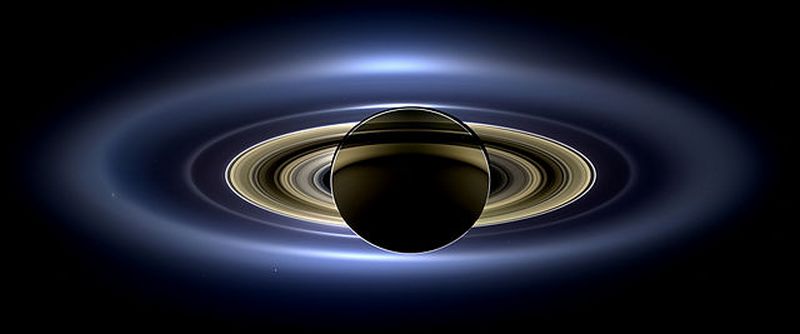The Mystery of Saturn’s F Ring Cracked by Japanese Scientists
What F ring? Many unfamiliar with Saturn’s peculiarities would probably be asking such a question. What is this so-called F Ring and why was it called that way? And what’s the fuss about scientists recently “cracking” Saturn’s F Ring?
The F Ring
The F Ring is the outermost discrete ring of the famed ringed planet. It is widely believed to be the most active ring in the entire solar system.
Active here means that the ring changes appearance in a matter of hours. Discovered by the Pioneer 11 imaging team in 1979, it is positioned some 3,000 kilometers beyond the outer edge of the A ring or the outermost of the large bright rings of Saturn.
Saturn’s rings, by the way, are named alphabetically based on the order they were discovered. The F Ring is hence the last ring discovered and also the biggest and outermost.
The F Ring is a very thin ring in comparison to Saturn’s other rings. It’s radial extent is only a few hundred kilometers. Based on recent images taken by NASA’s space telescopes, the ring has one core ring portion and a spiral outer part covering the core.
What Makes the F Ring Mysterious?
The F Ring is considered mysterious because of its appearance and behavior. It is seemingly herded by two satellites: Prometheus and Pandora.
These satellites are only considered “moonlets,” smaller than the 60 moons revolving around Saturn. Scientists widely believe that these two small satellites have been partly responsible for the F Ring’s tight formation but they are not sure how this unusual setup emerged.
Cracking the F Ring Mystery
Through simulations using computer systems at the National Astronomical Observatory of Japan, Kobe University (Japan) space scientists Ryuki Hyodo and Keiji Ohtsuki are offering an explanation for the mystery of Saturn’s F Ring.
postulated that the moonlets Pandora and Prometheus likely came to being after a collision of the outer edge of Saturn’s rings. The Japanese scientists believe that the F Ring is a natural outcome of satellite system formation.
Based on Hyodo and Keiji’s theory, Saturn may have had ancient rings with considerably more amounts of particles compared to what can be observed at present. The small satellites are believed to have eventually formed due to the spreading and accretion of the particles in these rings.
The simulations of the Japanese scientists show that during the final phase of satellite formation, there is a tendency for several small satellites (moonlets) to be created near the outer edge of the ring.
Based on the simulations, the F Ring was formed as Prometheus and Pandora collided with each other. Since these two small satellites have dense cores, they did not completely disintegrate after the collision. As partial disintegration took place, dust and other particles were thrown across different directions.
They are believed to be the source of the particles now residing along the F Ring. The process is considered natural and is the same process other satellites and rings undergo. Despite the odd configuration of the F Ring, Pandora, and Prometheus, they are believed to have been borne out of a natural process.
Further details of the study are available on the journal Nature Geoscience, where the study lead-authored by Ryuki Hyodo, a professor at Kobe University’s Department of Planetology, is published.
Significance of the Study
According to Professor Keiji Ohtsuki of the Department of Planetology at Kobe University, the study on the formation of satellites and planetary rings is significant as it can provide the key to understanding the development process of planetary systems.
Space and astronomy agencies in Japan and other countries have plans to conduct studies on the satellite system of Jupiter and Mars. The knowledge that will be derived from these studies will provide more inputs to better establish the science behind the origin of planet and, eventually, star systems.
source-techtheday.com



